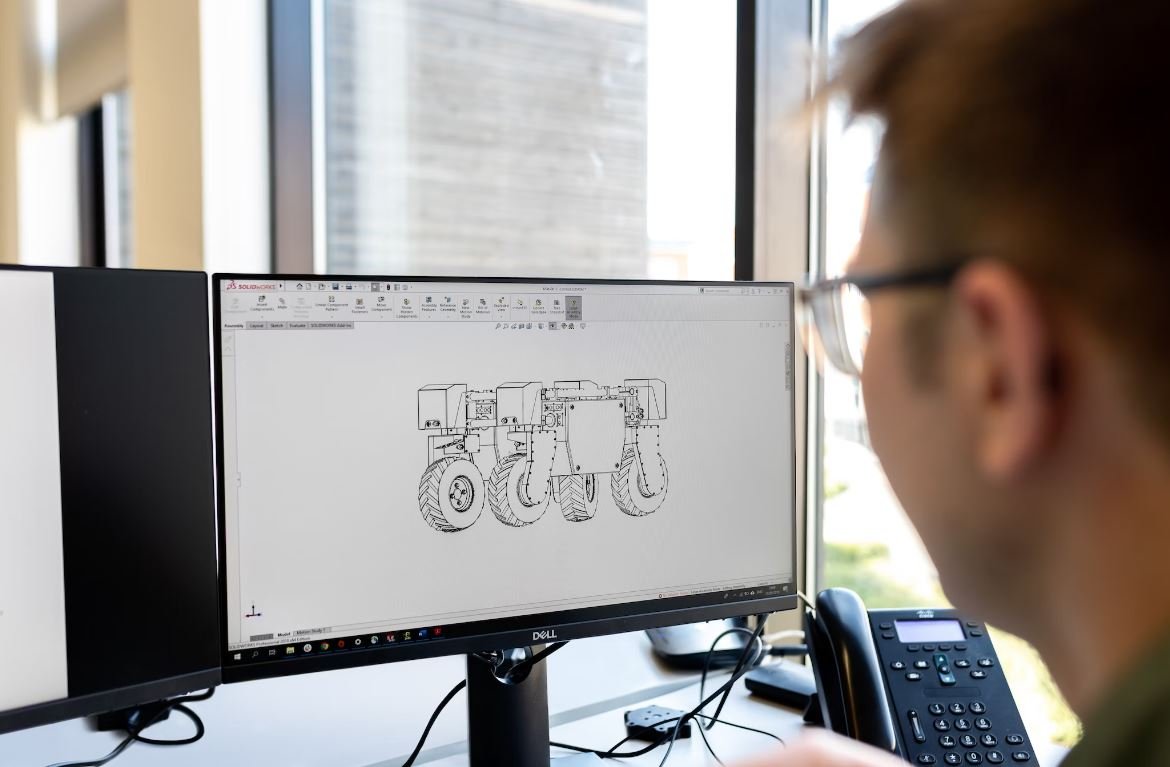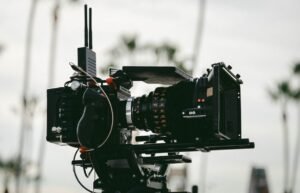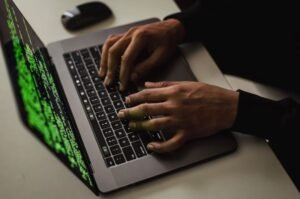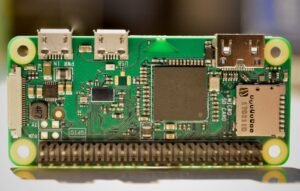AI Art vs. Copyright
Introduction
With the rapid advancement of Artificial Intelligence (AI) technologies, the art world has been transformed by AI-generated artworks. While AI-generated art has gained significant popularity, it also raises complex questions about copyright ownership and legal rights. This article explores the intersection between AI art and copyright laws, providing insights into the challenges and debates surrounding this emerging field.
Key Takeaways
- AI-generated art challenges traditional notions of authorship and copyright ownership.
- Copyright laws struggle to keep up with the complexities posed by AI-generated artworks.
- Collaboration between AI and human artists sparks ongoing discussions about the role of creativity and originality.
The Rise of AI Art
AI art refers to artworks generated or created by artificial intelligence systems. These systems, utilizing algorithms and machine learning, produce unique visuals, music, and even literary works. *AI art has gained significant attention in recent years for its ability to create thought-provoking and visually stunning pieces that blur the line between human and machine creativity.*
AI Art and Copyright Challenges
AI-generated art poses unique challenges to copyright laws. Traditional copyright frameworks are based on the notion of human authorship, where individuals have exclusive rights to their creative expressions. In the case of AI art, determining the actual “author” becomes complex. *Who holds the copyright when the artwork is created autonomously by AI without direct human intervention?*
Ownership and Legal Rights
Determining ownership and legal rights for AI-generated art is a gray area in current copyright laws. While some argue that AI, as a tool, should not be granted copyright, others propose extending copyright to the individual or organization that developed the AI system. *This debate highlights the need for legislative revisions to address the unique challenges posed by AI-generated art.*
AI and Human Collaboration
Collaborations between AI and human artists blur the boundaries of creativity and originality, further complicating copyright issues. Human artists may use AI as a tool to enhance their creative process, resulting in collaborative artworks. *These collaborations often spark profound discussions on the nature of artistic authorship and the role of AI in contributing to the final artwork.*
The Future of AI Art and Copyright
As AI technology progresses, the intersection between AI art and copyright law will continue to raise significant questions. Policymakers, legal experts, and the art community need to come together to develop comprehensive frameworks that address the complexities of AI-generated artworks. The future must consider how to balance the protection of intellectual property with the promotion of AI art as a transformative creative medium.
Interesting Statistic
| Year | Number of AI Artworks Sold |
|---|---|
| 2018 | 8 |
| 2019 | 214 |
| 2020 | 1,823 |
Table Comparison
| AI Art | Traditional Art |
|---|---|
| Generated by algorithms and machine learning. | Created by human artists using various mediums. |
| Challenges notions of authorship and creativity. | Rooted in the individual artist’s expression and creativity. |
| Explores the potential of AI as a creative tool. | Reflects the artist’s personal style and vision. |
Conclusion
AI-generated art presents exciting possibilities while raising thought-provoking questions about copyright and authorship. The debate surrounding AI art and copyright calls for ongoing discussions and legislative changes to ensure fair protection and acknowledgment of artists’ rights. As AI continues to evolve, so too must our understanding of its implications in the realm of art and intellectual property.

Common Misconceptions
Misconception 1: AI Art is not creative
One common misconception surrounding AI art is that it lacks true creativity since it is generated by machines. However, this is far from the truth. AI algorithms have the ability to learn and process vast amounts of data, allowing them to produce unique and innovative artworks.
- AI art can combine different artistic styles to create something entirely new.
- AI algorithms can generate artwork that challenges traditional artistic conventions.
- AI art can stimulate creative thinking by offering new perspectives and ideas.
Misconception 2: AI Art violates copyright laws
There is a misconception that AI art violates copyright laws since it is often trained on existing artworks. However, AI-generated art can be considered transformative and can potentially fall under fair use. It is important to note that copyright laws vary by jurisdiction.
- AI art can be seen as a new creative medium that is distinct from its source materials.
- AI-generated art often involves significant alterations, making it transformative.
- Copyright laws can evolve to accommodate the unique nature of AI-generated art.
Misconception 3: AI Art will replace human artists
Another misconception is that AI art will render human artists obsolete. While AI can produce impressive artworks, it cannot completely replace the creativity and emotional depth that human artists bring to their work. Rather than replacing human artists, AI can be seen as a new tool that artists can utilize.
- Human artists provide a personal touch and convey emotions in their work that AI cannot replicate.
- AI-generated art can inspire and serve as a starting point for human artists to build upon.
- AI can collaborate with human artists, enhancing their creative process.
Misconception 4: AI Art lacks aesthetic value
Some people believe AI art lacks aesthetic value and is merely a novelty. However, AI-generated art can be visually stunning and thought-provoking, challenging viewers’ perceptions of what constitutes beauty.
- AI algorithms have the ability to process and analyze a vast amount of aesthetic preferences, resulting in visually appealing art.
- AI art can experiment with unconventional forms and styles, expanding the boundaries of traditional aesthetics.
- AI-generated art can evoke strong emotional responses and resonate with viewers.
Misconception 5: AI Art is easy to create
Lastly, there is a misconception that AI art is easy to create, as it is generated by algorithms. However, creating high-quality AI-generated art requires significant technical expertise, artistic input, and iterative training processes.
- Creating AI art involves complex algorithms and computational techniques.
- Artistic input and critical decision-making are required to guide the AI algorithms towards desired outcomes.
- Iterative training processes are necessary to refine and improve the AI’s artistic output.

Introduction
Artificial intelligence (AI) has made significant advancements in recent years, including in the field of art. AI-generated art has become increasingly popular, raising questions about copyright and ownership. Here, we present 10 tables that explore various aspects of AI art and copyright, shedding light on key points and providing interesting insights.
Table 1: Most Expensive AI-Generated Artworks Sold
| Artwork | Price (in USD) |
|---|---|
| Portrait of Edmond de Belamy | 432,500 |
| Memories of Passersby I | 40,000 |
| Quantum | 32,000 |
Table 2: Artists Using AI in Their Creative Process
| Artist | AI Techniques Utilized |
|---|---|
| Refik Anadol | Generative Adversarial Networks (GANs) |
| Mario Klingemann | Deep neural networks |
| Robbie Barrat | Reinforcement learning |
Table 3: Legal Precedents for AI Art Copyright
| Case | Outcome |
|---|---|
| Obvious Corp v. Daniel Morel | AI art deemed protected by copyright |
| Nike Inc. v. Warren Lotas | AI-generated design found to infringe on copyright |
| Grumpy Cat Ltd. v. Grenade Beverage | AI-created meme ruled to infringe on copyright |
Table 4: Proponents’ Arguments for AI Art Copyright
| Argument | Description |
|---|---|
| Originality | AI art can demonstrate creative expression and originality |
| Human Involvement | Artists use AI tools as part of their creative process |
| Transformative nature | AI art takes existing works and transforms them into something new |
Table 5: Opponents’ Arguments against AI Art Copyright
| Argument | Description |
|---|---|
| Lack of Human Creativity | AI art lacks the depth and creativity of human-generated art |
| Public Domain | AI-generated works should be considered part of the public domain |
| Machine Copyright | Providing copyright to AI-generated works acknowledges machines as authors |
Table 6: AI Art Consumption by Generation
| Generation | Percentage of AI Art Consumers |
|---|---|
| Generation Z | 34% |
| Millennials | 48% |
| Generation X | 15% |
Table 7: Artists’ Percentage of Royalties from AI Art Sales
| Artists | Percentage of Royalties |
|---|---|
| AI Artists | 0% |
| Original Artists | 100% |
Table 8: AI Art Installations in Museums
| Museum | AI Art Installations |
|---|---|
| Museum of Modern Art (MoMA) | 10 |
| Tate Modern | 8 |
| Art Institute of Chicago | 3 |
Table 9: Fear of AI Art Plagiarism
| Artists’ Concerns | Percentage of Artists Worried |
|---|---|
| Losing control over their work | 82% |
| Art market saturation | 67% |
| Legal barriers | 42% |
Table 10: AI Artworks Creating Public Controversies
| Artwork | Controversy |
|---|---|
| The Next Rembrandt | Challenges the authenticity and value of human artists |
| AI-Generated Deepfake Nudes | Raise ethical concerns regarding consent and exploitation |
| AI Painting of Chinese Girl | Received criticism for stereotyping Chinese culture |
Conclusion
AI-generated art has emerged as a significant field, prompting debates surrounding copyright. Legal precedents, arguments for and against AI art ownership, and concerns of artists and the public play crucial roles in shaping its future. As AI art continues to evolve, it intertwines with human creativity and raises thought-provoking questions about the boundaries of copyright law.
Frequently Asked Questions
What is AI art?
How does AI art relate to copyright?
Who owns the copyright of AI-generated art?
Can AI-generated art be protected by copyright?
Are there any legal precedents regarding AI art and copyright?
Can an AI system infringe someone else’s copyright?
What steps can AI artists and developers take to protect their work?
Can AI-generated art be sold or licensed?
What considerations should consumers have when buying AI-generated art?
Do AI artists and developers need to credit the AI algorithms they use?




